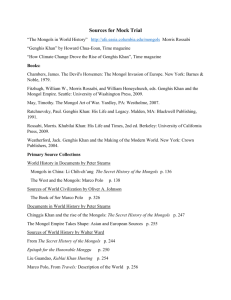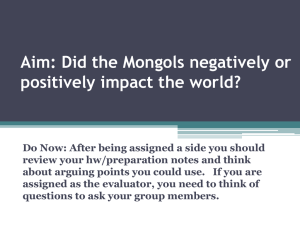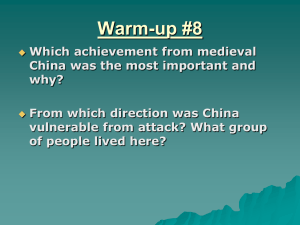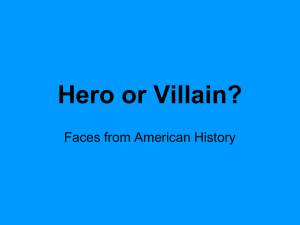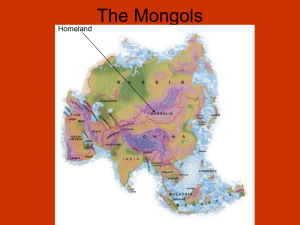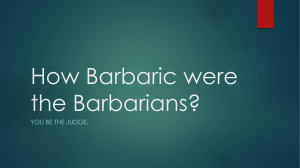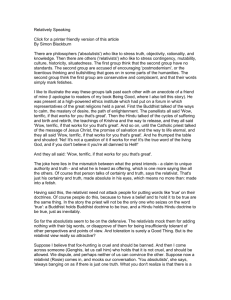File - Kevin Ray Duke
advertisement
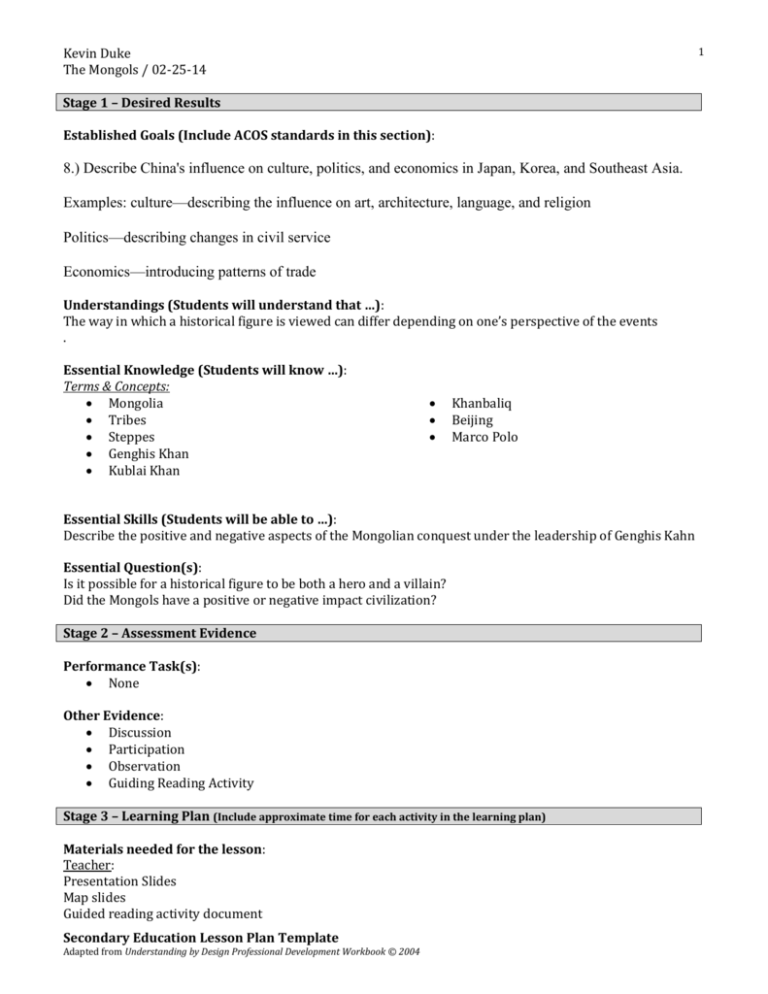
1 Kevin Duke The Mongols / 02-25-14 Stage 1 – Desired Results Established Goals (Include ACOS standards in this section): 8.) Describe China's influence on culture, politics, and economics in Japan, Korea, and Southeast Asia. Examples: culture—describing the influence on art, architecture, language, and religion Politics—describing changes in civil service Economics—introducing patterns of trade Understandings (Students will understand that …): The way in which a historical figure is viewed can differ depending on one’s perspective of the events . Essential Knowledge (Students will know …): Terms & Concepts: Mongolia Tribes Steppes Genghis Khan Kublai Khan Khanbaliq Beijing Marco Polo Essential Skills (Students will be able to …): Describe the positive and negative aspects of the Mongolian conquest under the leadership of Genghis Kahn Essential Question(s): Is it possible for a historical figure to be both a hero and a villain? Did the Mongols have a positive or negative impact civilization? Stage 2 – Assessment Evidence Performance Task(s): None Other Evidence: Discussion Participation Observation Guiding Reading Activity Stage 3 – Learning Plan (Include approximate time for each activity in the learning plan) Materials needed for the lesson: Teacher: Presentation Slides Map slides Guided reading activity document Secondary Education Lesson Plan Template Adapted from Understanding by Design Professional Development Workbook © 2004 Kevin Duke The Mongols / 02-25-14 Bell ringer (if one is used): Map: As a bell ringer we will view a physical and political map of where Mongolia is located? Introduce Map slides of Asia: Which is political? Which is Physical? Why? Compare Mongolia today to the Mongol Empire (map on page 425) Review of relevant, previously learned information: During the discussion phase of the lesson, we will briefly re-visit: The size of the Roman Empire Primary versus secondary sources Political versus Physical Map Introductory Activity: Students will be broken into groups as class begins: Briefly the discuss the following What does it mean to be considered a hero? What traits does she or he need to possess? As a group come up with one historical figure that meets your definition of a hero and why. What makes someone a villain? Is it possible to be a hero & a villain? As a class we discuss if the following historical figures are heroes or villains: Alexander the Great William Tecumseh Sherman Robert E. Lee Abraham Lincoln Andrew Jackson After a few minutes of discussion of these topics, I will introduce the students to Genghis Khan. Video: 10 Brutal facts about Genghis Kahn Body of the lesson: Pose the Question: Is he a hero or Villain? I will read part of an excerpt in their textbook about Genghis Kahn. Questions to pose about the excerpt: Is it a primary source? What is an Empire? Follow up video: The Mongols Briefly discuss Genghis Kahn and the Mongols Introduce the guided reading activity: Using pages 424-429 complete the reading activity. Secondary Education Lesson Plan Template Adapted from Understanding by Design Professional Development Workbook © 2004 2 Kevin Duke The Mongols / 02-25-14 Secondary Education Lesson Plan Template Adapted from Understanding by Design Professional Development Workbook © 2004 3 4 Kevin Duke The Mongols / 02-25-14 We will peer grade this activity if time permits. Preview of the next lesson: During the lesson we will briefly mention the term “Middle or dark Ages” and what these terms mean. Related out of class assignment: None Description of co-teaching strategy used in this lesson. If co-teaching was part of this lesson, describe: co-teaching model used, how and why this particular strategy was employed, role (lead teacher/secondary teacher), and details of the implementation of the co-teaching model. One teach one observe. During this lesson I will be observed by my CT and US. One Teach, one assist. During the guided reading activity, my CT will walk around (as will I) and assist students as needed/ Secondary Education Lesson Plan Template Adapted from Understanding by Design Professional Development Workbook © 2004



